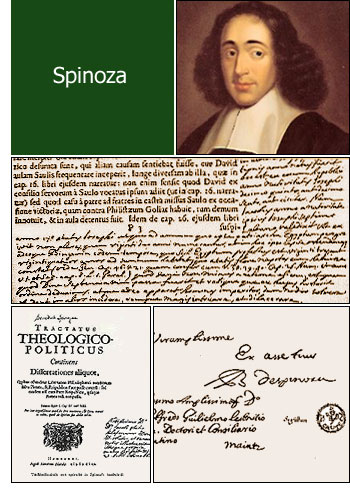 History of Holland
History of HollandHistory of Netherlands
Amsterdam Holland
Netherlands cities
Tulips of Holland
Dutch painters
Dutch writers and scientists
Arminius
Descartes
Erasmus
Grotius
Jacob Cats
Joost van den Vondel
Pieter Corneliszoon Hooft
Spinoza<
Dutch paintings
Famous Dutch people
Dutch history
Dutch folk tales
Rembrandt and the Nightwatch
Holland history
Holland on sea history
Pictures of Holland
Dutch architecture
Holland facts
New Amsterdam history (New York)
Useful information
Spinoza
 Baruch (also known as Benedictus) de Spinoza sprang from a Jewish family of Portugal or Spain, which had fled to Holland to escape persecution at home. He was born in the city of Amsterdam on November 24, 1632; taught by the Rabbin Morteira, and, in Latin, by Van den Ende, a free-thinking physician who had enjoyed a philological training; and expelled by anathema from the Jewish communion, 1656, on account of heretical views.
Baruch (also known as Benedictus) de Spinoza sprang from a Jewish family of Portugal or Spain, which had fled to Holland to escape persecution at home. He was born in the city of Amsterdam on November 24, 1632; taught by the Rabbin Morteira, and, in Latin, by Van den Ende, a free-thinking physician who had enjoyed a philological training; and expelled by anathema from the Jewish communion, 1656, on account of heretical views.During the next four years he found refuge at a friend's house in the country near Amsterdam, after which he lived in Rhynsburg, and from 1664 in Voorburg, moving thence, in 1669, to the city of The Hague, where he died in 1677. Spinoza lived in retirement and had few wants; he supported himself by grinding optical glasses; and, in 1673, declined the professorship at Heidelberg in Germany offered him by Karl Ludwig, the Elector Palatine, because of his love of quiet, and on account of the uncertainty of the freedom of thought which the Elector had assured him.
Spinoza himself made but two treatises public: his dictations on the first and second parts of Descartes's "Principia Philosophiae", which had been composed for a private pupil, with an appendix, "Cogitata Metaphysica", 1663, and the "Tractatus Theologico-Politicus", published anonymously in 1670, in defense of liberty of thought and the right to unprejudiced criticism of the biblical writings. The principles expressed in the latter work were condemned by all parties as sacrilegious and atheistic, and awakened concern even in the minds of his friends.
When, in 1675, Spinoza journeyed to Amsterdam with the intention of giving his chief work, the "Ethics", to the press, the clergy and the followers of Descartes applied to the government to forbid its issue. Soon after Spinoza's death it was published in the "Opera Posthuma", 1677, which were issued under the care of Hermann Schuller, with a preface by Spinoza's friend, the physician Ludwig Meyer, and which contained, besides the chief work, three incomplete treatises ("Tractatus Politicus, Tractatus de Intellectus Emendatione, Compendium Grammatices Linguae Hebraeae") and a collection of Letters by and to Spinoza.
The "Ethica Ordine Geometrico Demonstrata", in 5 parts, treats (1) of God, (2) of the nature and origin of the mind, (3) of the nature and origin of the emotions, (4) of human bondage or the strength of the passions, (5) of the power of the reason or human freedom. Spinoza made a very early sketch of the system developed in the "Ethics", the "Tractatus Brevis de Deo et Homine ejusque Felicitate", a Dutch translation in two copies was discovered, though not the original Latin text.
Spinoza died on February 21, 1677 in The Hague.

